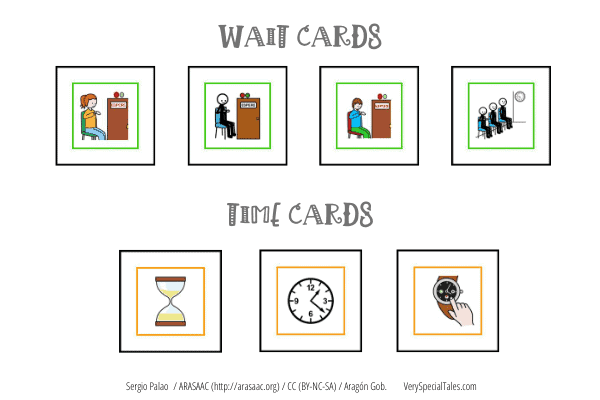
How to Teach Kids to Wait: 15 Useful Ideas to Learn Waiting Skills
In this article, you will learn 10+ ideas and strategies to teach kids waiting skills. There are also specific strategies that will help kids with special needs, autism, or ADHD. You will also learn why kids (and adults!) find it so difficult to wait.
Some kids just can’t wait.
They may be too young and have not yet developed waiting skills. They may have impulse control or developmental issues that make waiting a hard pill to swallow.
Whatever the case that brought you here is, I’ll share plenty of strategies that will help you teach your kid waiting skills
What kids may have more difficulty waiting?
- Toddlers / small children
- Children with impulse control issues
- Children with developmental issues
- Kids who have trouble following verbal explanations
Why is it important to learn waiting skills?
Our everyday life is filled with situations when we need to wait.
Social rules also often require us to wait.
Kids who have not learned waiting skills may behave aggressively or act impulsively
Examples of situations that require our kids to wait
Waiting comes in different shapes and forms.
We will need our kids to learn to wait:
- When time is required for something to happen -> a movie to start, food to be served in a restaurant, a road trip to finish
- When we are in the middle of a conversation ->learning not to interrupt
- Playing games -> learning to wait for your turn
- In school/social situations -> waiting in line, waiting for the teacher to give instructions,
Why is waiting so difficult for kids?
These are some of the reasons why children find it difficult to wait:
- Instant Gratification Trumps Waiting
Let’s face it. Who would want to wait if they can get whatever they want on the spot?
Waiting skills are learned through childhood, as we guide our kids through the need to wait to access the things they want.
Sometimes because time is a requirement (you can’t have your cookies till they’re baked).
Sometimes because we need to comply with certain rules (you need to wait till you finish dinner to have your dessert) - Time is a Difficult Concept to Grasp
It takes time to understand time. It’s an abstract concept.
When my kids were younger they’d rather wait 1 hour than 7 minutes. Clearly, one is less than 7.
When you tell your child “you have to wait 5 minutes”, it may read in her mind as “you have to wait for a lifetime” - Lack of Understanding of Social Rules (especially in younger kids or kids with special needs)
Sometimes we need to wait because there are social rules that indicate that it is the right thing to do. But for some kids, these rules are not that obvious.
Why can’t I leave the table if I have already finished eating?
Why do we need to wait in line? - Impulsivity Issues
- It’s boring.
Another hard truth. Waiting is boring. I’m sure you don’t enjoy waiting in line at the bank or in the middle of a traffic jam.
Your child doesn’t like it either.
Teaching Kids Waiting Skills
Objectives of the waiting strategies you’ll read below:
- Learning waiting skills
- Increasing the waiting time tolerance
The strategies I’m listing below can be implemented both at home and at school.
I’ve put together a list of ideas that came up in our meetings with our behavioral and clinical psychologists.
Each kid is a world on its own. Browse through these ideas. Try them. And decide which ones would work better for your kids or students.
I’ll start with some general tips, and then drill down to specific strategies.
General Tips to Teach Kids How to Wait Patiently
- Look for practice situations.
These strategies are great, but they will be a little bit easier to implement if you practice and get familiar with them when you don’t have a real need for your child/student to wait patiently. - Then, move the practice to waiting situations in the natural environment.
- Praise successful waits.
Waiting patiently will be more likely to happen in the future if you have rewarded your child’s successes with praise. - Make it fun.
Create fun waiting situations to be able to practice the advice below. - Explain why we need to wait in different situations (two people talking, waiting for everybody to finish dinner…)
- Establish in which situations it is ok to interrupt a conversation (“ I need to go to the bathroom, NOW”, “I’m feeling sick”, “I have been stung by a bee”)
Strategies to Learn to Wait
- Visual Timers
Problem: As we mentioned above, time is an abstract concept
Solution: By introducing visual timers, you are transforming that abstract concept into something tangible that your child can take control of.
There are plenty of options out there: stopwatches, timers, liquid timers.
Some kids may enjoy watching the numbers move down on a digital stopwatch. Some others may find that too boring and may prefer the visual effect of fine sand flowing down an hourglass, or the colorful oil in a liquid motion timer. - Give your child some control over the waiting time
There are some situations in which I give my child some control over his waiting time.
When he says “I’m getting hungry” (but it is too late to have a snack and too early to start dinner), I may tell him:
“How about we wait 10 or 15 minutes to start preparing the pasta?
He will obviously choose 10, and then I will say “Would you like to set the timer for 10 minutes, and then we’ll start work”
I find that asking him to set the timers works really well for him. It gives him some control over his waiting time. - Have a code signal for “I hear you. I’ll be with you shortly”
When you’re talking to somebody and your child interrupts you, you can develop a “code” for “I hear you. I’ll be with you shortly”
This can be as simple as softly squeezing their hand, and then finish what you were saying.
You may need to make this transition fast at the beginning (to teach your kid that this actually works), and extend the time your child needs to wait over several waiting situations. - Distractions / Waiting Activities / Waiting Games
Sometimes we just need to wait.
We are on a road trip, we are waiting for our lunch to be served in a restaurant.
Having an assortment of games that they can both play on their own and play as a family can be extremely useful for waiting time.
Check out these 20+ games to play while waiting.
Autism-friendly Waiting Strategies
Some kids with autism and special needs find it especially challenging to do waiting time. These are some autism-friendly waiting strategies (and as such, they will also work wonders with kids that have fewer challenges learning the concept of time)
- Wait for my 10 fingers to lift
Our kid has a flashing message in a continuous loop in his mind that reads “Mommy is mine, and I don’t want to share her with anybody else”
While he needs to learn that Mom needs to be shared with the rest of the family, he needs extra help to process that.
He has autism and although he can understand the concepts of sharing and waiting, my interactions with other people may easily trigger very challenging situations.
This is a trick our psychologist shared with us:
Hold your child’s forearm (for example) with both hands, and tell him/her:
“Now, you will wait till all my fingers are up”.
And you slowly start lifting one finger at a time, while you engage in a conversation with somebody else.
This strategy allows your child to keep a bit of your attention (physically) while you still interact with another person. - Behavioral Strategies: “Non-contingent attention” program to teach your child not to interrupt
This was part of a behavioral plan developed for a kid with autism. Whenever the adult caring for him would engage in a conversation with another person, he would start disruptive attention-seeking behaviors.
Non-contingent means you give attention for no special reason (“just because”).
Your kid will get the attention that he/she is craving for without the need to interrupt you.
This approach will need to be implemented over a period of time:- Acknowledging your kid before you start an interaction with another person
- Providing attention at very high rates of attention (every minute or even less) while engaging with another person
- Slowly extending the amount of time that elapses between attention moments (e.g. 2 minutes – 3 minutes – 5 minutes).
The final objective is for the kid to learn to regulate and wait.
- Wait Card
A “Wait Card” is a visual cue that signals a period of waiting time for the child.
Visual cues are often used with kids with autism. The card reinforces the verbal message you are conveying.
How to use it:- Practice so that your child understands the mechanics.
- Choose a waiting situation or a game where the kid needs to wait for his turn
- Give your child or student the wait card, and explain that she will have to wait (to talk to you or take a turn) while the card is in her hand. Say “now, you are waiting”
- Take back the card when the waiting time has finished.
These are examples of wait cards. You can download them filling in your details below the picture (FREE)

- First / Then Cards
This is another autism-friendly strategy to help kids to wait.
First/Then cards transform the waiting time into a sequence of what needs to happen in order to access the reward or activity they want.
We use visuals to implement this type of activity. But, in our case, we may also draw on a whiteboard the sequence. - Educational Apps
Another great option are picture-based learning apps that support kids with their daily routines.
An example could be ChoiceWorks. This app has many features, and one of them is its “Waiting Board”. The board helps kids learn waiting skills like taking turns and/or not interrupting.
I hope you found this post useful.
Other Impulse Control Resources
- 30 Effective Impulse Control Strategies
- Impulse Control Activities for Kids
- Chairs for Kids with ADHD: Wobble Chairs, Cushions, Balance Balls & More
- 10 ADHD Strengths (Printable PDF for Kids)
- Time Management Tips and Activities for Kids
Other Autism Resources
- Strategies to Prevent Head Banging in Kids with Autism
- Strategies to Prevent Wandering Off in Kids with Autism
- Autism & Anxiety: Coping Strategies
Please, leave a comment below if you wish to share your own tips
Share this Pin! ❤️



4 Comments
Ayesha
These are fantastic ideas. I work with parents in my sessions all the time and these are concrete, usable strategies I can give them to try. Definitely will be a big help in teaching Generation Z on how to delay instant gratification!
Clara
Thanks a lot, Ayesha! I’m glad you’ve found them useful.
Shari
Thank you for these excellent tools. They are creative and I can imagine they will be effective with multiple ages and challenges. I can’t wait to try some of them!
Clara
Thanks, Shari. Let us know how they work!